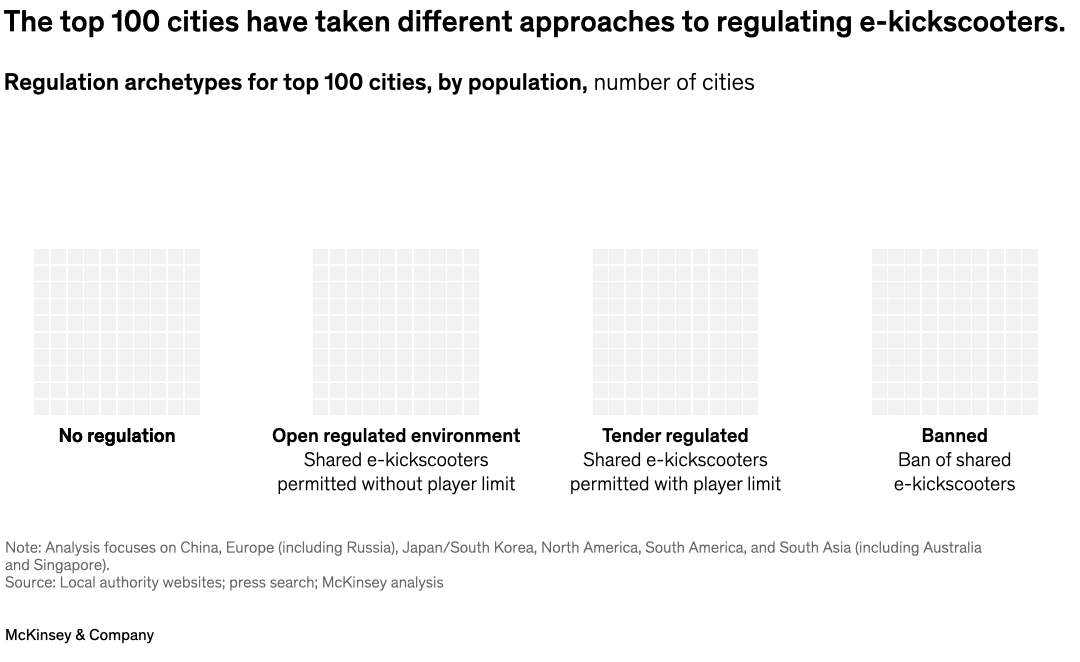As shared electric kickscooters (e-kickscooters) become ubiquitous around the world, cities are increasingly considering regulation. Partner Kersten Heineke and colleagues analyzed the top 100 global cities by population to see how the rules are affecting the market. They find four regulation archetypes: bans on the shared use of e-kickscooters (35 percent of the top cities), regulation that limits the number of operating services (13 percent), some regulation but no limit on the number of players (23 percent), and no regulation (29 percent).

Image description:
Four square grid charts are arranged in a row, each containing 100 individual squares. These charts represent the regulation patterns for e-kickscooters in the 100 most populated cities, with each filled-in square denoting a city following the respective regulation archetype. From left to right, the first grid has 29 squares filled, indicating cities with no specific e-kickscooter regulations. The second grid has 23 squares filled, representing cities with an open regulated environment, where shared scooters are allowed without player limit. The third grid, with 13 squares filled, represents cities that are tender regulated, allowing shared scooters with a player limit. The final grid has 35 filled squares, signifying where e-kickscooters are completely banned.
Note: This analysis focuses on diverse global regions including China, Europe (including Russia), Japan/South Korea, North America, South America, and South Asia (including Australia and Singapore).
Source: Local authority websites; press search; McKinsey analysis.
End of image description.
To read the article, see “Electric kickscooters have come of age. Regulators have taken notice,” June 7, 2023.